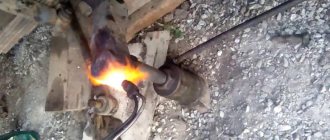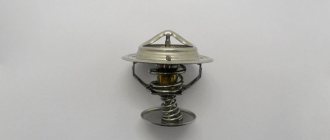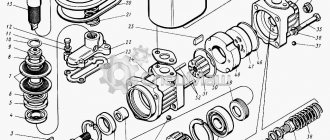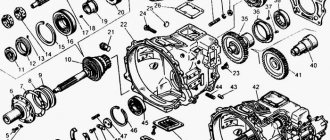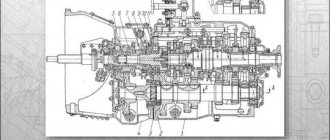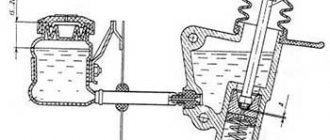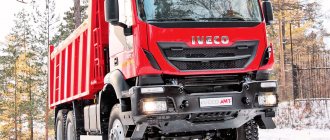Volvo Truck was the first to build its Russian plant - near Kaluga, in an open field. Its half was received by the subsidiary Renault Trucks (it started assembly later and without an official ceremony). Last fall, Scania entered the game: its assembly plant opened near St. Petersburg, in a rented warehouse building. As a result, over the past year, Volvo assembled 1,236 vehicles on Russian soil, Renault assembled 253 trucks, and Scania immediately picked up a good pace, producing 333 vehicles, mostly complete dump trucks.
And only now Mercedes has joined them - no longer independently, but with the help of KAMAZ. Isn't it a little late? In this case, better late than never! Because Mercedes almost lost the Russian cargo market.
Until the end of 2009, sales of Mercedes trucks and cars were handled by one company, Mercedes-Benz Automobiles LLC. And if she was doing great with cars, then with large trucks - alas. While competitors increased supplies, opened branches and service stations, created factories in Russia or near its borders (meaning the Polish MAN plant, focused on the CIS), Mercedes slept.
Only when it became clear that the market was about to be lost, the Germans came to their senses and urgently created a joint venture with KAMAZ, Mercedes-Benz Trucks Vostok (abbreviated as MBTV), to which the entire “cargo” business was transferred, with the exception of light vans. It was headed by the German Boris Billich, and the director of sales and marketing became - who do you think? — Konstantin Kogogin, son of KAMAZ General Director Sergei Kogogin. So KAMAZ is now a full-fledged family concern...
Things were looking up for the Mercedes team. Sales increased, new dealers appeared. And now the assembly of Mercedes has begun in Naberezhnye Chelny! True, this is not a full-fledged production, like Volvo in Kaluga and Scania in St. Petersburg: cabs, engines and other components are delivered there separately, and a model with the required configuration is assembled from them on site. And Mercedes come to Naberezhnye Chelny in the form of “ready-made construction kits”, completely disassembled kits (CKD). This technology is simpler (unpack the boxes and use a wrench!), but it is less progressive and not flexible.
It should be noted that the assembly of Mercedes has nothing to do with the assembly line production of KAMAZ vehicles themselves: the production of Mercedes is located in one of the workshops of the giant KIP-Master building, which is leased to KAMAZ partners (KIP is the Kama Industrial Park). Space in KIP-Master is rented by more than 130 companies of various profiles: manufacturing, warehouse, engineering.
It is here that Daimler already assembles Mitsubishi Fuso light trucks, and now - in the next workshop - also Mercedes, the latest model, the same as in Germany.
Most Mercedes assemblers already have experience working at other car plants: some came from KAMAZ, others from the neighboring Sollers production. According to the workers, the salaries are not very high, comparable to KAMAZ (about 16 thousand rubles), but various allowances and bonuses are added to them - and as a result, the amount almost doubles.
Friendship - Freudshaft: on the left is the director of the joint venture Boris Billikh, on the right is the director of sales and marketing Konstantin Kogogin
Before the start of graduation, the staff trained for ten months in Germany, and now among the 60 workers there are about a dozen in black rather than blue overalls: these are Germans working on a rotational basis. They train ours for a month, then leave for their homeland, changing with a new brigade. There are even secret competitions between our and German workers in terms of build quality: they say ours are already winning...
According to unofficial information, several copies were assembled even before the creation of production, at KAMAZ sites - in order to have time to certify the models before January 1, 2010 and so that they could meet Euro 3 standards (cars certified after this date must comply with Euro 4).
The first “official” car, the Actros 1841LS tractor, was made in Chelny on September 30 last year. But now Actros are produced here only in the form of construction chassis.
And the main model is the budget tractors Axor 1835LS and 1840LS. They have in-line six-cylinder Euro 3 engines with a power of about 350 and 400 hp, a gearbox with a lever (and not with a joystick, like the German counterparts), and air suspension at the rear. The equipment is quite decent: a 650-liter fuel tank, differential lock, electric windows, additional cabin insulation, a 2 kW air “hair dryer” - and, of course, a “separator” filter.
The prices are already known: Axor 1835LS costs 2 million 350 thousand rubles, a complete four-axle Actros 4141K dump truck costs 4 million 400 thousand rubles.
However, they are ready to assemble vehicles with any options upon request; they will also make other models: Atego delivery trucks have already been certified, and in the future they plan to assemble nosey Zetros all-terrain vehicles and very specific Unimogs.
At the same time, there is no talk of any localization: all the components are imported, and even the cabins for the Aksors are brought not from Turkey (where they are also produced), but from Germany.
By the time the plant opened, exactly one hundred copies had been made, the production plan for 2011 was 1,100 vehicles, and it was planned to sell 2,500 new trucks (some of them through imports).
The workshop also assembles Actros construction chassis, but they are in the minority
Chelny Mercedes can be distinguished by their VIN number, which begins with the characters “Z9M”
0 / 0
At the same time, the management of MBTV stated at a press conference that it had applied for preferential conditions for industrial assembly: this would allow the import of components with zero duties. Wait a minute! But to do this, according to existing laws, in eight years it is necessary to produce 350 thousand cars with at least 60% localization... Is MBTV capable of this? After all, the design capacity of the enterprise is only 4,500 trucks per year.
It turns out that the application was submitted not by MBTV itself, but by the main shareholder of KAMAZ, the state corporation Russian Technologies, which includes both KAMAZ and VAZ. “You need to know who to be friends with!” — Konstantin Kogogin smiled, pointing his hand towards the head of Russian Technologies, Sergei Chemezov.
We can assume further developments. In Germany, Actros and Axor will soon be discontinued: they will be replaced by a completely new series, the engines for which are described in the same issue of the column. And models that are outdated for Western Europe will be produced in “third world countries” - Russia and Turkey (see note on the same page).
But assembly is only half the battle. Because Mercedes components will soon appear on KAMAZ trucks! An agreement has already been reached on the production of bridges, then the production of cabins will be established (apparently from Axor: there are rumors that the Aktros cabin will be given to the Chinese), and it will come to engines. Recently, Sergei Kogogin stated that by 2022, more than 50% of KAMAZ vehicles will be equipped with Mercedes cabs, and the first KAMAZ with Mercedes components should be shown in the fall at the Comtrans exhibition in Moscow.
And this is not even a hidden, but an obvious threat to the traditional products of KAMAZ itself. After all, if in ten years it will be possible to buy relatively inexpensive Kama trucks with high-quality German components, then who will need KAMAZ trucks with long-outdated cabs and engines? Except for the army and municipal services.
Lest MBTV products become a cuckoo bird that will squeeze its ancestor out of the nest! Moreover, Daimler has no shortage of such experience.
Turk-Benz
At the Mercedes-Benz Turk plant in Turkish Aksaray, where the budget Axor model, well known to domestic carriers, is produced, production of the flagship Actros has also begun - both for Turkey itself and for export. While the vehicles are assembled from vehicle kits supplied from the head plant in Werth, Germany, the engines meet Euro 4 and Euro 5 standards. Over the next five years, Daimler plans to invest 130 million euros in Turkish production: for the company this is the third largest “truck” market after the most Germany and Brazil.
Excuse me, I don’t recognize you in makeup: test drive KamAZ-5490
Of course, we would like our engine to be under the KamAZ cab. But if Mercedes is better, then why not. The same applies to the transmission. But there is one advantage for sure: these units are well known abroad, they can be serviced almost anywhere. For a long-haul tractor this is a definite plus.
The second factor is price. Despite the use of imported units, the cost of KamAZ-5490 was 10% lower than that of foreign analogues. Reliability, it seems, did not suffer from this. At the same time, buyers of these cars have a good opportunity to order it for themselves: choose the desired configuration (we are talking about engines of 428 hp, 401 hp or 360 hp and an automatic or manual transmission), as well as install any additional equipment from a fairly extensive list.
For example, lining wear sensors, an engine pre-heater, an electronic tachograph, an audio system, air conditioning, an autonomous cabin heater, heated seats and mirrors, an electric sunroof are available, and some of this equipment is already in the “base”. You can equip a car for transporting dangerous goods - install flashing lights, protect fuel tanks and everything else. And it will be cheaper than buying an imported analogue. How well all this will turn out, as I already said, we cannot judge. But we are able to evaluate some other qualities of the tractor. To do this, let's finally get behind the wheel.
About the automatic transmission selector and the lost pedal
For the test drive, we specifically chose a car with an automatic transmission. There is only one lever, it is on the panel, and this is the parking brake. Where is the automatic transmission selector? He settled on the steering column switch, and the mode is selected by turning, and not by moving the lever. On the one hand, this is good: you won’t accidentally turn on something unnecessary with your knee. But overall it’s somehow unusual.
The steering column is tilt adjustable, and the range is impressive. The workplace is not only convenient, it is somehow cozy, you don’t want to get out of here. Of course, after several hundred kilometers the impressions may change, but so far everything seems comfortable and - I’m not afraid of this word - beautiful. The aesthetics of KamAZ, of course, have little in common with those of the Kia Rio, but it is there.
The on-board computer readings are easy to read, and you can use the buttons on the left side of the steering wheel to switch information display modes. The buttons on the right are responsible for cruise control. Despite the considerable radius of the steering wheel, you don’t have to reach for them, just like the left steering column switch. A very nice mirror control panel is located on the door panel. Well, let's start the engine.
Not to say that the cabin is very quiet - after all, the OM 457 LA is a rather conservative engine, rooted in the 90s. But for a truck it is quite acceptable. After playing with the gas pedal, we immediately make sure that the noise from the engine should not be too intrusive. You can talk without shouting and listen to music.
India-Benz
This is the translation of the name of the BharatBenz brand, under which Daimler will begin producing trucks in Chennai, India, in 2012. Camouflaged trucks are still being tested at a test site built next to the plant, but it is already known that the range will include vehicles with a gross weight from six to 49 tons. Medium and heavy models are based on the Mercedes Actros/Axor family, light ones are based on Mitsubishi Canter trucks. Surely their design will be approximately the same as that of Indian-made MANs: reinforced and simplified (powerful chassis with leaf spring suspension, cabins with simple finishing, not the most environmentally friendly engines). Investments in production will amount to 700 million euros. According to the company's management, by 2022 the Indian truck market will grow by 80%, and local truck production volumes will double.
Gearbox in KamAZ 5490
KamAZ models of the 5490 series are famous for their reliability, simplicity and unpretentiousness. It’s not for nothing that people call this car a “Kamazomersedes”. And the whole point is not only in the above qualities, but also in the convenience of KamAZ. This machine could not have gained such enormous popularity if it had not had such a huge “sweep” among the customer base - KamAZ trucks of this series can have both automatic and manual gearboxes. Namely, there is a gearbox installed here from an upgradeable one - the driver has the opportunity to additionally install an intarder (a transmission retarder for trucks, also developed).
How many stages are there in the gearbox?
One of the main features of the gearbox on this KamAZ is the presence of a huge number of steps. Thus, on the first version of the automatic transmission, a maximum of 12 gears are available, and there is also automatic control (manual transmission “ZF 12AS21300 TD”). The gears have the following gear ratios:
| 1 | 2 | 3 | 4 | 5 | 6 | 3x |
| 15.86 | 9.57 | 5.87 | 3.47 | 2.1 | 1.29 | 14.68 |
| 12.33 | 7.44 | 4.57 | 2.7 | 1.63 | 1 | 11.41 |
The second version of the manual transmission is 16-speed (manual transmission “ZF 16S2220 TD”). However, the driver will have to manually change between gears. The gears have the following gear ratios:
| 1 | 2 | 3 | 4 | 5 | 6 | 7 | 8 |
| 16.41 | 11.28 | 7.76 | 5.43 | 3.59 | 2.47 | 1.7 | 1.19 |
| 13.8 | 9.49 | 6.53 | 4.57 | 3.02 | 2.08 | 1.4 | 1 |
On which side is the gearbox located and where?
Another important question is where and on which side is the checkpoint located on KamAZ 5490? Since we live in Russia, we have right-hand drive and, accordingly, cars are made for Russian roads with such traffic. This means that the gearbox on a relatively new KamAZ is located on the driver’s right hand next to his seat.
What is the maximum speed the car can reach?
Definitely every driver (especially truckers) will be interested in information about the maximum speed to which they can accelerate the KamAZ 5490. It is worth noting that this is a fairly fast machine, the maximum speed of which is at least 110 kilometers per hour, which is quite fast for trucks .
China-Benz
The Chinese company Beifang Benci (abbreviated as Beiben) has started producing a new model H06. The cabin design for it was designed by the German engineering company EDAG: among its “truck” design projects are cabins for the MAN TGA and DAF XF models, Brazilian VW Constellation tractors, the current generation of Mercedes Sprinter light-duty trucks... The company assures that the cabin for the Chinese is “complete” new development", a completely new development. But take a closer look: the contours of the roof don’t resemble anything? What if you look inside? So this is the same cabin from the Mercedes Actros model, only externally changed beyond recognition! And it is possible that after the current Aktros is discontinued from production, production of its cabin will be transferred specifically to China.
Why does a car need a gearbox?
As you may have noticed, every car has a gearbox (gearbox). On some cars it is mechanical, and on others it is automatic. The main purpose of the gearbox is, oddly enough, to change gears in a car. Using the gearbox, the driver can control the torque supplied from the engine to the crankshaft. Eventually the torque reaches the wheels and they rotate.
Automatic transmission
At the moment there are only two types of gearboxes - automatic and manual. The first ones were developed relatively recently. Their main difference is that this is a simplified version of mechanics, in which the choice of gears, as well as their switching, is made without driver participation. The only thing required of him is to press the gas pedal. However, the main disadvantage of this design is the extremely complex design, as a result of which the risk of breakdown or failure of the system increases (which has happened more than once). This is the price that those who do not want to spend a lot of time learning to drive a car with a manual transmission have to pay.
Manual transmission
The manual gearbox is a sort of “dinosaur” in this section. It was almost on the first versions of cars. The principle of its operation and device is extremely simple. Essentially, this is a lever with which the driver can engage the required gears (which are located in the gearbox). It is as a result of these actions that the car shifts gears. Over the entire period of production and use of manual gearboxes, they have been brought to an almost ideal state and operating principle.
Without delving into all the details, it will be difficult to find disadvantages of a “mechanics” compared to an “automatic”, except for ease of operation (the driver of a car with a manual transmission has to manually change gears).
Firstly, a manual transmission is of higher quality and more reliable (which means that it breaks down less often, and the driver has to spend less money on repairs and maintenance). Secondly, a manual transmission costs much less than an automatic transmission due to its simplicity. Thirdly, it is more unpretentious and easier to maintain. By the way, on a manual transmission you can change the oil about once every two years (if the driver uses high-quality oil, and not some cheap one he bought in a nearby garage).
If you use well-known high-quality oil, you can literally go hundreds of thousands of kilometers without changing it, which is simply unrealistic with an automatic transmission. Also, in a manual transmission the temperature is much lower than in an automatic transmission, so the oil does not burn and “lives” longer.
KAMAZ 65206 and KAMAZ 65207
The family of modern vehicles with a new cab was continued by the 65206 truck tractor and 65207 flatbed truck, released in 2015 following the first-born of the merger between Mercedes and KAMAZ. The cabins of these models are distinguished by a low roof and one berth.
Other models
The next models were KAMAZ 65801 and KAMAZ 65802 dump trucks with a modification without a bed. The series was completed by the KAMAZ 65806 truck tractor with a full-fledged cabin with a sleeping bag and a low roof.
Today the line of new models has been completed by KAMAZ 65209 - a completely new vehicle with a 6x2 wheel arrangement, with a middle drive axle and a lifting rear axle during transportation and movement without load.
At first glance, the cabin is identical to the cabin of the flagship 5490. But this is only at first glance. The location of the buttons has changed, becoming more convenient; instrument readings and indicators are equally visible at any time of the day, regardless of whether the dashboard is exposed to sunlight. The advanced cabin is designed to ensure that nothing distracts the driver from the road.
Changes in modification 5490 NEO did not affect the cabin, but modification 54901, presented in 2022, promises to be much more successful than its predecessor. The design of the cabin has been changed in connection with the desire to move away from the prototype cabin of 2001 and is based on the design of the Mercedes-Benz Actros without compromising functionality and convenience.
The cabin height has increased by 200 mm, the truck's headlights are made in the high and low beam compartments with halogens and LEDs. The ladder was almost completely moved inside the cabin, only the first step remained outside, the engine tunnel disappeared from the floor, the gearbox control knob is made in the form of a joystick under the steering wheel on the right side.
A refrigerator and a button to start the engine appeared. The control panel has been modernized and has become more optional. In addition, there is even a sun protection curtain on the door. Drivers can leave reviews about the merits of the improved model today: the car has been produced since 2022 and still remains cheaper than foreign analogues in its class.
Truck information
After the new KamAZ 5490 has been examined from all sides, the most important question remains: how much does such a truck tractor cost? {q} It was originally planned that the price would not exceed 3 million rubles. And so it happened, the starting price of KamAZ 5490 was 2.9 million rubles.
As a result, we can say with confidence that KamAZ managed to build a decent truck that can compete with its European classmates. Dynamic, reliable, safe, KamAZ 5490 will appeal to truck drivers.
KamAZ 5490 - technical characteristics
For the plant, the start of production of KamAZ 5490 was a landmark event, since until now it had produced, although improved, but still obsolete versions of cars from the times of the Soviet Union. The plant’s plans include conquering a quarter of the Russian market for the production of long-haul tractors.
Despite the fact that the truck has increased comfort and technical characteristics that allow it to be considered the flagship of the manufacturer, it is very affordable, easy to maintain, and is very popular in the domestic market and in several dozen other countries around the world.
The tractor has many options that allow it to freely compete with the best representatives of this class.
Truck equipment
Cabin dimensions KAMAZ-5490
- a comfortable all-metal cabin with two berths and a high roof, the prototype of which was the Mercedes Axor cabin;
- German power unit;
- increased load capacity;
- air suspension seats;
- climate system;
- adaptive cruise control;
- directional stability system;
- power steering;
- autonomous heating;
- electronically controlled disc brakes;
- preheater;
- air suspension;
- European wheels with tubeless tires;
- modern optics.
Drivers also noted some disadvantages of KamAZ 5490 trucks: low ground clearance, narrow sleeping areas, high fuel consumption by the Russian engine.
The basic model of the tractor is a two-axle frame platform with a 4x2 wheel arrangement and rear-wheel drive. In the production of a car, 40% of imported components are used, the remaining parts and components are domestic. In all respects, the truck meets European standards.
To ensure timely service, the tractor manufacturer has created a large network of official services that maintain a constant availability of spare parts.

